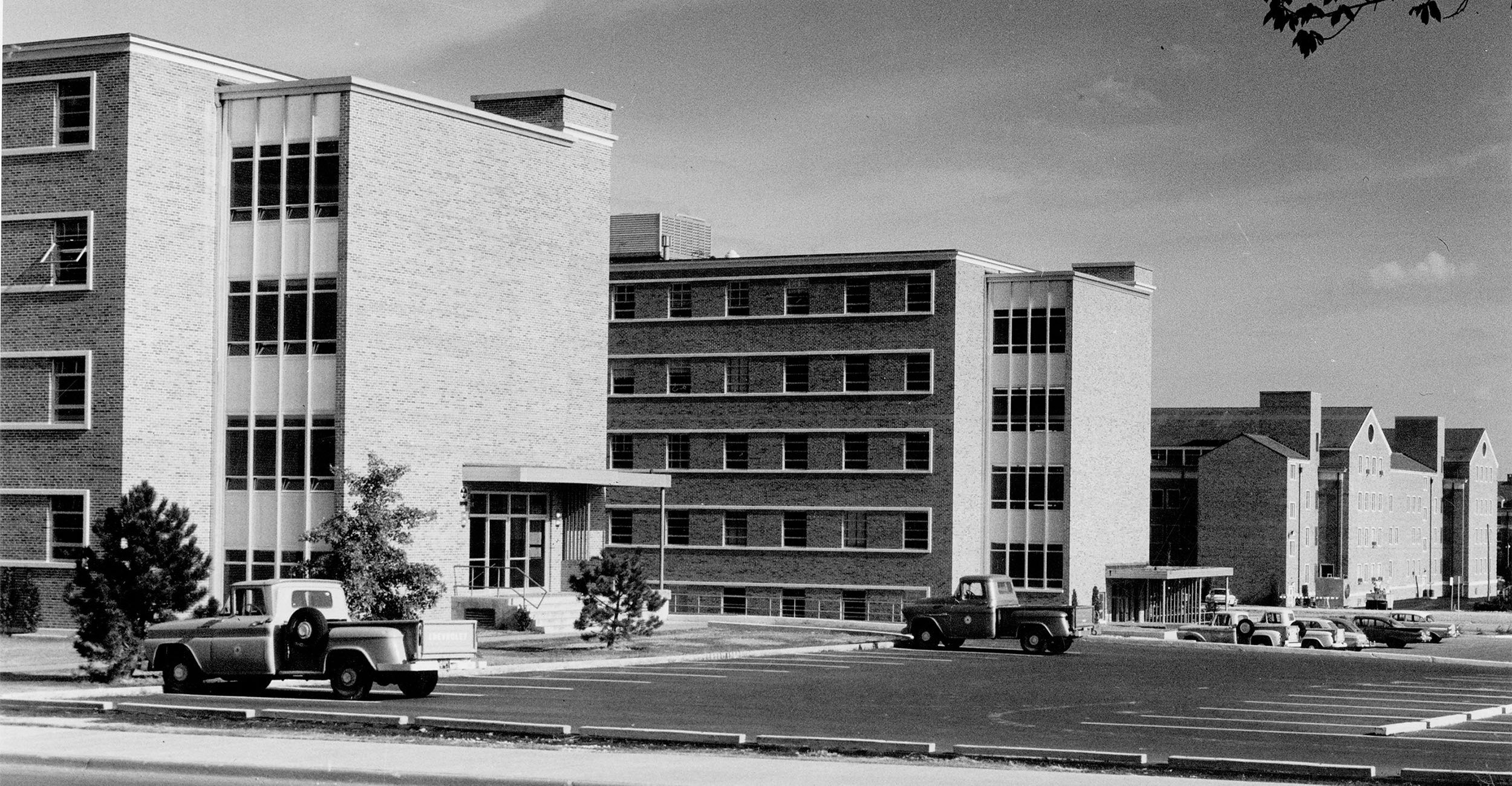
Beyond The Bricks: Unveiling the past and future of Agricultural Hall
Tuesday, May 28, 2024
Media Contact: Sophia Fahleson | Digital Communications Specialist | 405-744-7063 | sophia.fahleson@okstate.edu
Brick walls, weathered by the years, echo whispers of stories from the past. From its humble beginnings to its current state, Agricultural Hall will continue to stand on the southwest corner of Monroe Street and Farm Road on the Oklahoma State University campus.
Agricultural Hall was the first major building for the Division of Agriculture after World War II. Construction began in the early 1950s and took more than 10 years to complete, according to the OSU Board of Regents.
“Going back to the late ’50s, there was a distinct need for a building like Ag Hall that would bring all portions of the agricultural campus together,” said Randy Raper, OSU Agriculture assistant vice president of facilities.
The north wing of Agricultural Hall was completed in early 1958, and Ted Nelson, OSU Department of Agricultural Economics retiree, attended classes there from 1961 to 1963 as a graduate student.
“The space where Ag Hall south and Ag Hall east stand now was a parking lot before the building construction began,” Nelson said. “I left, and when I came back in September 1965, Ag Hall south had been built.”
The south hall construction was completed in 1964 followed by the east facing building’s completion in March 1969. This final building connected the two wings.
Nelson worked in farm management extension and his program was officed on the fourth floor of Agricultural Hall south until Agricultural Hall east was finished.
The grand opening for the complete building was not a traditional one, Raper said. In place of a ribbon cutting, dignitaries broke a 12-foot loaf of bread. The loaf was made by bakers at the Consumers IGA grocery store.
This gesture was used to symbolize the college’s responsibility to aid in feeding a “hungry world,” according to an Ag Spotlight newsletter article published at the time of the opening.
Agricultural Hall has played a major role in the lives of thousands of students and staff, including associate vice president of OSU Extension, Damona Doye, who has been a faculty member since 1986.
Doye attended OSU as an agricultural economics undergraduate student from 1976 to 1980 and obtained her master’s degree in 1981. While pursuing these degrees at OSU, most of her time was spent in Agricultural Hall, she said.
“During undergrad, I spent almost as much time in Agricultural Hall as I did in my own dorm room,” Doye said. “The office I am in now was the dean’s office when I was in school.”
The $3 million Agricultural Hall building was considered one of the nation’s most modern buildings at the time, according to the Ag Spotlight newsletter, and the entire complex was air-conditioned.
The hall was funded by state building bond issues and federal grants, which differs from New Frontiers Agricultural Hall, which was funded mostly by donations.
Agricultural Hall is efficient from a space perspective with a lot of assignable space in the building, Raper said. However, the penalty for that efficiency is narrow hallways as well as a lack of handicap restrooms and restrooms for males and females on every floor, he said.
“When we were students, the front steps of Agricultural Hall were the hangout place for ag majors to wait for class or just sit around and talk,” said Rob Terry, head of the Department of Agricultural Education, Communications and Leadership. “Things have changed over the years, and students don’t hang out in front of the building today.”
Kim Anderson, emeritus faculty member in the agricultural economics department, obtained a bachelor’s degree in agricultural education and a doctorate in agricultural economics from OSU. Anderson said the building itself has not changed much throughout the years.
“I have been in the same office since 1982,” Anderson said. “I am only the third faculty member to ever be in this fifth floor, Room 517 office, and up until 2010, I had the original furniture in my office.”
The building has served the college well, Terry said, and the space will be a blessing to others when the teaching functions move to New Frontiers Agricultural Hall.
Many years ago, Nelson had the same feeling current students are experiencing with the New Frontiers Agricultural Hall building, he said. One of his favorite memories was getting to move into the new building, he added.
“Once the college is in New Frontiers Agricultural Hall, we are still going to have a strong presence in Agricultural Hall with about 50% of the space being used by OSU Agriculture,” Raper said. “The other 50% will be used for other entities.”
Informational technology, finance and some administrative offices will remain in the current building.
As the move to New Frontiers Agricultural Hall nears, the fond memories of classes, lifelong friendships, the front steps, time in the fishbowl or involvement within the college remains.
Story by: Adisyn Auld | Cowboy Journal
